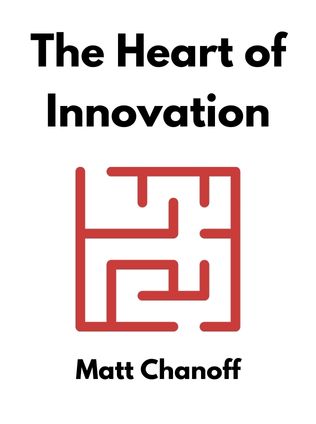
The Heart of Innovation
A Field Guide for Navigating to Authentic Demand
By Matt Chanoff,
Published 11/2023
About the Author
The book "The Heart of Innovation" is a collaborative effort by four remarkable authors: Matt Chanoff, Merrick Furst, Mark Wegman, and Daniel Sabbah. Each of these authors brings a unique perspective and wealth of experience in the field of innovation and technology. Together, they have crafted a comprehensive guide aimed at helping innovators understand and navigate the complex landscape of authentic demand.
Matt Chanoff is a well-respected entrepreneur and investor, known for his ability to identify and cultivate high-potential startups. Merrick Furst is a professor at Georgia Tech and a pioneer in the field of computer science, with a particular interest in cybersecurity and innovative problem-solving techniques. Mark Wegman, a former IBM Fellow, has made significant contributions to the fields of computer science and business, especially in the areas of algorithm design and optimization. Daniel Sabbah, a seasoned executive with extensive experience in software development and technology strategy, has held key leadership roles at IBM and other major tech companies. Together, these authors have a deep understanding of both the theoretical and practical aspects of innovation, making them uniquely qualified to write this insightful book.
Main Idea
The central thesis of "The Heart of Innovation" revolves around the concept of "authentic demand." The authors argue that true innovation is driven not just by creating new products or technologies but by addressing genuine needs and desires of people. They emphasize the importance of understanding human behavior, recognizing biases, and identifying the real, often hidden, demands that can lead to successful innovation.
The book highlights the common pitfalls that innovators face, such as the curse of knowledge, fundamental attribution bias, and confirmation bias, and provides practical tools and methodologies to overcome these challenges. By focusing on authentic demand, innovators can avoid the costly mistakes of developing products that fail to resonate with their intended audience. The authors introduce the idea of "not nots," or the implicit needs and behaviors that people naturally address in their daily lives, and how recognizing these can lead to breakthrough innovations.
Table of Contents
- Introduction
- Part One: Accidental Innovation
- Getting Unstuck with Authentic Demand
- Finding Authentic Demand
- Three Types of Innovation: Informative, Transformative, and Formative
- Part Two: Deliberate Innovation
- Beginning to Innovate Deliberately
- The Mystery of Damballa
- Four Issues that Get in the Way of Innovation
- Diagramming Situations to Uncover Authentic Demand
- The World’s Deep Hunger: Unconditional Positive Regard
- Conclusion
Introduction
The introduction sets the stage by highlighting the often-overlooked challenges of innovation. The authors point out that while blockbuster innovations like the iPhone or the Boeing 737 capture our imagination, the path to such successes is typically fraught with failures. They argue that understanding the demand side of innovation, particularly the nuanced and often hidden aspects of human behavior, is crucial for developing products that people will truly embrace.
Part One: Accidental Innovation
Getting Unstuck with Authentic Demand
The first part of the book delves into the concept of getting unstuck in the innovation process by focusing on authentic demand. The authors define authentic demand as the driving force behind successful innovations, emphasizing that it is not merely about creating something new but about creating something that people genuinely need and are willing to adopt into their lives.
They introduce the idea of a "complete innovation," which involves a reciprocal relationship between the innovator and the audience. This reciprocity means that the innovation must prompt people to change their behavior in a way that sustains the innovation itself. For example, a new social media platform succeeds not just because it exists, but because it creates a cycle of engagement where users find value and continuously participate.
Sign up for FREE and get access to 1,400+ books summaries.
You May Also Like
The Lean Startup
How Today's Entrepreneurs Use Continuous Innovation to Create Radically Successful Businesses
By Eric RiesWho Moved My Cheese?
An Amazing Way to Deal with Change in Your Work and in Your Life
By Spencer Johnson, M.D.Make Your Bed
Little Things That Can Change Your Life...And Maybe the World
By William H. McRavenThe Ride of a Lifetime
Lessons Learned from 15 Years as CEO of the Walt Disney Company
By Robert Iger



















